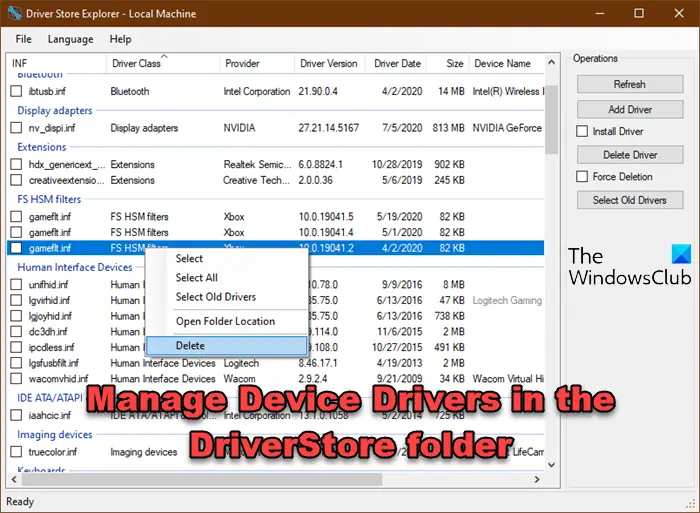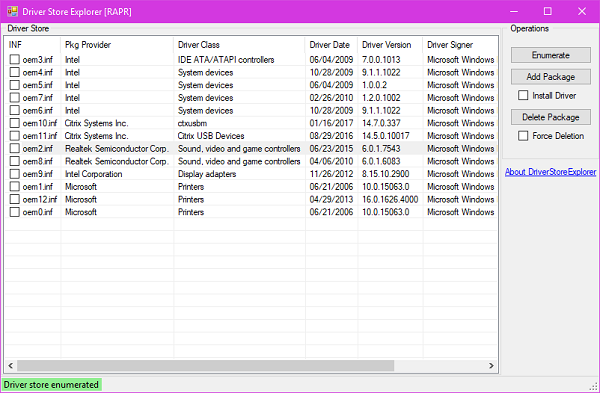If you’ve been a core Windows user for a long, you might as well be aware that any device driver that you install on your Windows OS is stored in a system folder named DriverStore. It is a collection of trusted device driver packages from third-party sources. This collection is used to validate which drivers can be installed on your computer. In this post, we are going to review a freebie – Driver Store Explorer, which helps you manage, list, add or remove the device drivers installed on your PC.

Driver Store Explorer for Windows PC
Driver Store Explorer is a free software that lets you manage, list, add, or remove device driver packages in DriverStore folder of Windows.
Driver Package and INF File
If any device driver needs to be installed on a PC, it has to have its driver package files copied into DriverStore. When we add any driver package in DriverStore, all of its files are copied along with one INF File, which actually references all the other files present in the package. As every single one of these files is crucial for driver installation, the INF file must reference all the files that are present in the package so that during installation, these can be found easily in DriverStore. In the other way round, if the INF file references a file that’s not available in the package, it is not copied to the DriverStore.
Copying the files related to a driver package to DriverStore is called Staging. In order to install a driver for any device on a PC, it must be staged in DriverStore i.e. all the corresponding package files, along with the INF File must be copied to DriverStore. However, you can’t just pick any driver package and copy it to DriverStore. It needs to go through a couple of integrity and syntax checks before the files are copied. Below are the brief stages during staging:
- Verification: Before the driver package is copied to DriverStore, it is verified against several security checks, which confirm whether or not the package files are corrupted or tampered with. The driver’s package should be digitally signed in order to pass through this check.
- Validation: This is the next part where the user permissions are validated and the INF file is checked for all the referenced files in the package. In case any discrepancy is found, the package shall not be copied.
Using Driver Store Explorer

Once you have downloaded Driver Store Explorer, extract the files and run the executable (Rapr.exe) with administrator privileges.
The Driver Store Explorer window will open right away on your screen. Click Enumerate to list all the copied (and installed) driver packages in the DriverStore location. Once all the Driver Package details are listed, you can choose to (force) delete any zombie driver that might potentially be creating a problem.
Also, if you have a package available, you can copy its files to DriverStore using the Explorer window. Just click Add Package and select the package files to import. Apart from this, you can also export package files from Driver Store Explorer. Right-click any driver entry and select Export to save it to your local disk.
That’s pretty much about it. It is indeed a decent tool to add or remove any driver packages from your system. Old drivers keep sitting in the system consuming memory and resources, so this can come quite in handy to get rid of them. It may not be able to delete system-critical drivers – and that is good!
You can download the Driver Store Explorer from github.com.